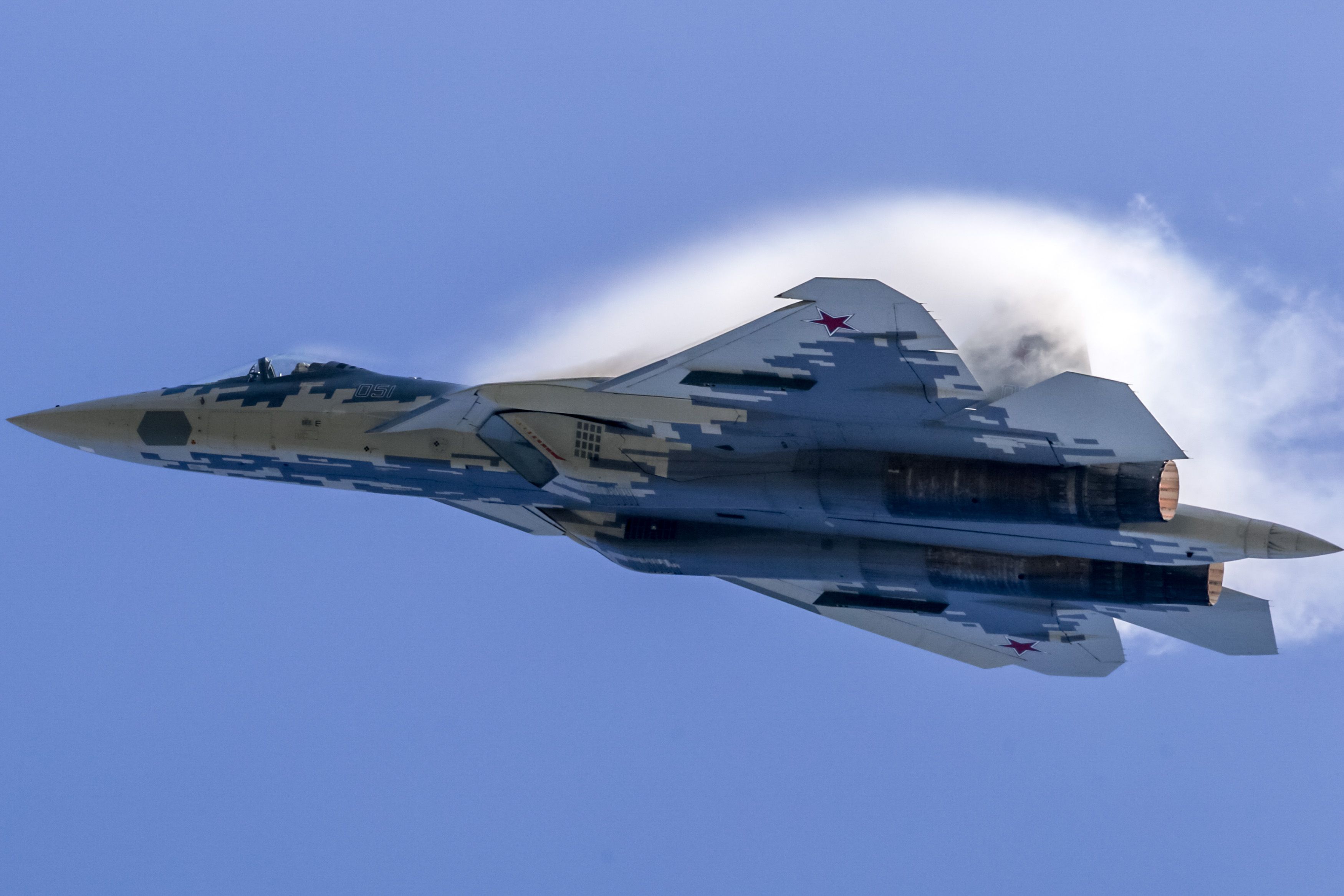
The smaller, single-engine F-16 has a slightly shorter, but virtually identical combat range to the F-15 heavy fighter. Take the example of the American F-15 F-16 heavy and light fighter duo. After all, in addition to flight characteristics and armament, the usefulness of a given fighter is mainly influenced by its range and combat range. All this is combined with a high thrust-to-weight ratio – greater than one, as previously set out in the requirements by Rostec – as well as weapons payload and internal fuel capacity. The aircraft has all the features of a 5 th generation fighter: stealth technology, reduced radar cross-section (RCS), internal weapons bay, AESA (active electronically scanned array) radar and sensor fusion, the latter two setting new standards compared to previous avionics. Photo:EUROPRESS/Pavel Bednyakov/Sputnik/AFP As we can see on the former Nothrop YF-23 the V-tail together with the advanced flight control system can replace traditional control surfaces, further reducing the radar cross-section of the stealth fighter. What the latter essentially means is that the so-called butterfly tail replaces the traditional vertical and horizontal stabilizer with two surfaces in a V-shaped configuration. An interesting aerodynamic design feature is the characteristic shape of the chin-mounted air intake and the all-moving V-tail. In terms of payload, the Checkmate can carry a maximum of 7,400 kilograms of armament on its external and internal hardpoints. “essentially a single-engine version of the long-in-development Su-57 Felon”.Īccording to figures presented by Rostec, the Checkmate has a maximum top speed of more than Mach 1.8 – around 2,200 km/h – with a range of 2,800 kilometres without external fuel tanks or aerial refuelling. By eliminating parallel structures and streamlining development, while the LMFS project eventually remained in the drawer, the engineering experience was kept alive at Sukhoi.Īccording to the information currently available for the general public and Rostec’s presentation on Tuesday, the Checkmate – officially referred to as the Sukhoi LTS, or Legkiy Takticheskiy Samolet (Light Tactical Aircraft) – is Although the concept of a Light Multi-Function Frontal Aircraft (LMFS) had also been studied by Mikoyan-Guryevich – another UAC affiliate – the real breakthrough came with the merger of the two offices. „Russia has developed in record time a fighter aircraft that meets the requirements of modern air combat”Īs Sergei Chemezov, Rostec’s CEO, explained, in little over a year, the Sukhoi design bureau has succeeded in creating a fully operational prototype of a completely new aircraft, using computer modelling, virtual test flights to facilitate aerodynamic design work and integrating already available subsystems. However, despite these forecasts and the negative experience gained from the protracted developments in recent decades, as the public was able to see on Tuesday Although, as previously reported by our portal, both the Russian Aerospace Forces and the United Aircraft Corporation (UAC) have been interested in developing a new single-engine, 5 th generation light fighter, its debut was predicted by the aviation community to be at best only in the second half of the 2020s.

Not so long ago, Rostec’s announcement of a ground-breaking new Russian fighter aircraft was an unexpected surprise at the MAKS, one of Europe’s largest airshows. What is behind the new “Checkmate” and how can it change Russia’s aviation industry?ĪUnveiling Checkmate at the International Aviation and Space Salon in Zhukovsky on 20 July 2021

Partly breaking with the Russian aeronautical tradition of the past decades, this fighter aircraft with a single-engine design could finally bring the long-awaited breakthrough for the Russian aerospace industry.


The appearance of Russia’s new 5th generation single engine light fighter at the International Aviation and Space Salon surprised the aviation community worldwide.


 0 kommentar(er)
0 kommentar(er)
